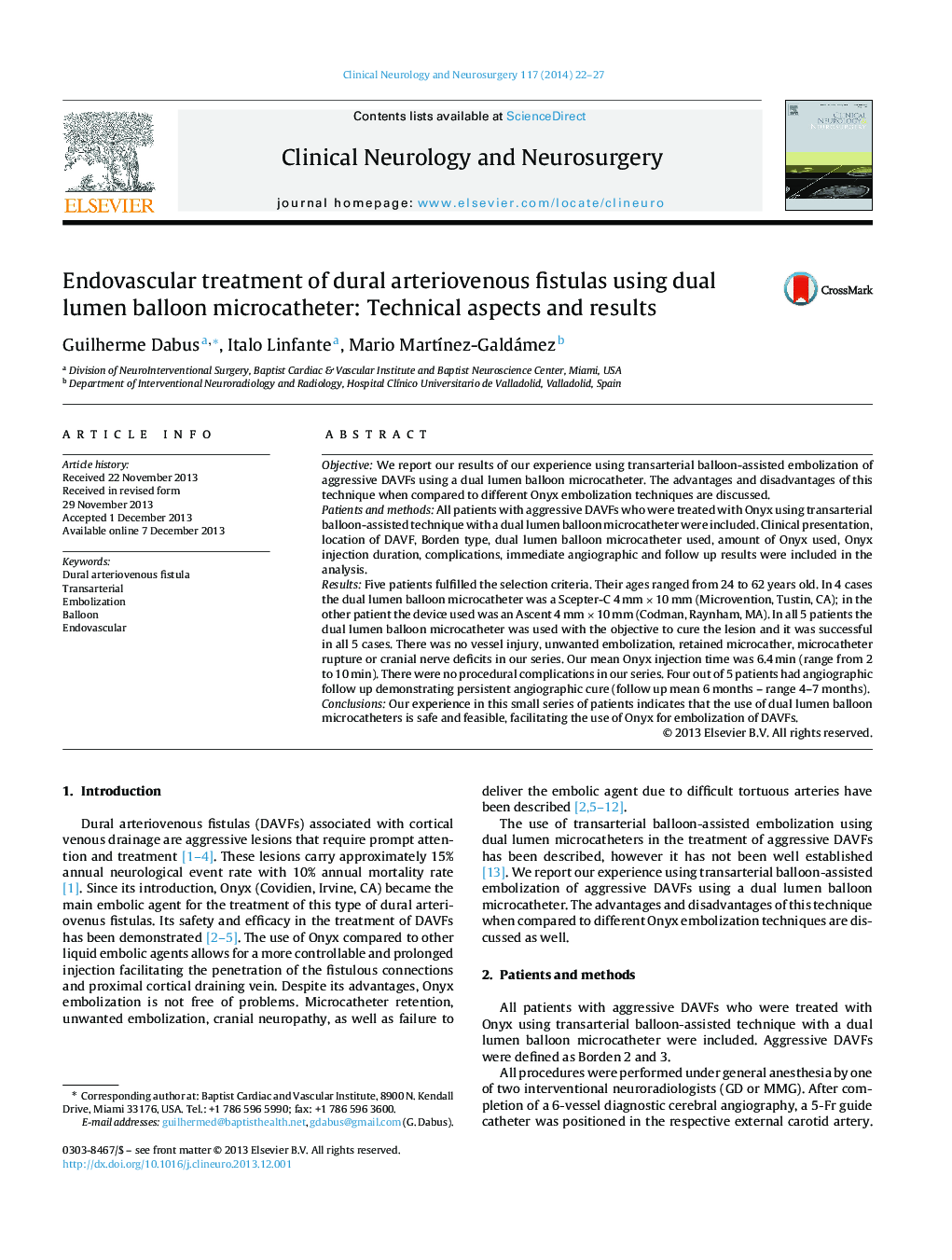| Article ID | Journal | Published Year | Pages | File Type |
|---|---|---|---|---|
| 3040345 | Clinical Neurology and Neurosurgery | 2014 | 6 Pages |
ObjectiveWe report our results of our experience using transarterial balloon-assisted embolization of aggressive DAVFs using a dual lumen balloon microcatheter. The advantages and disadvantages of this technique when compared to different Onyx embolization techniques are discussed.Patients and methodsAll patients with aggressive DAVFs who were treated with Onyx using transarterial balloon-assisted technique with a dual lumen balloon microcatheter were included. Clinical presentation, location of DAVF, Borden type, dual lumen balloon microcatheter used, amount of Onyx used, Onyx injection duration, complications, immediate angiographic and follow up results were included in the analysis.ResultsFive patients fulfilled the selection criteria. Their ages ranged from 24 to 62 years old. In 4 cases the dual lumen balloon microcatheter was a Scepter-C 4 mm × 10 mm (Microvention, Tustin, CA); in the other patient the device used was an Ascent 4 mm × 10 mm (Codman, Raynham, MA). In all 5 patients the dual lumen balloon microcatheter was used with the objective to cure the lesion and it was successful in all 5 cases. There was no vessel injury, unwanted embolization, retained microcather, microcatheter rupture or cranial nerve deficits in our series. Our mean Onyx injection time was 6.4 min (range from 2 to 10 min). There were no procedural complications in our series. Four out of 5 patients had angiographic follow up demonstrating persistent angiographic cure (follow up mean 6 months – range 4–7 months).ConclusionsOur experience in this small series of patients indicates that the use of dual lumen balloon microcatheters is safe and feasible, facilitating the use of Onyx for embolization of DAVFs.
